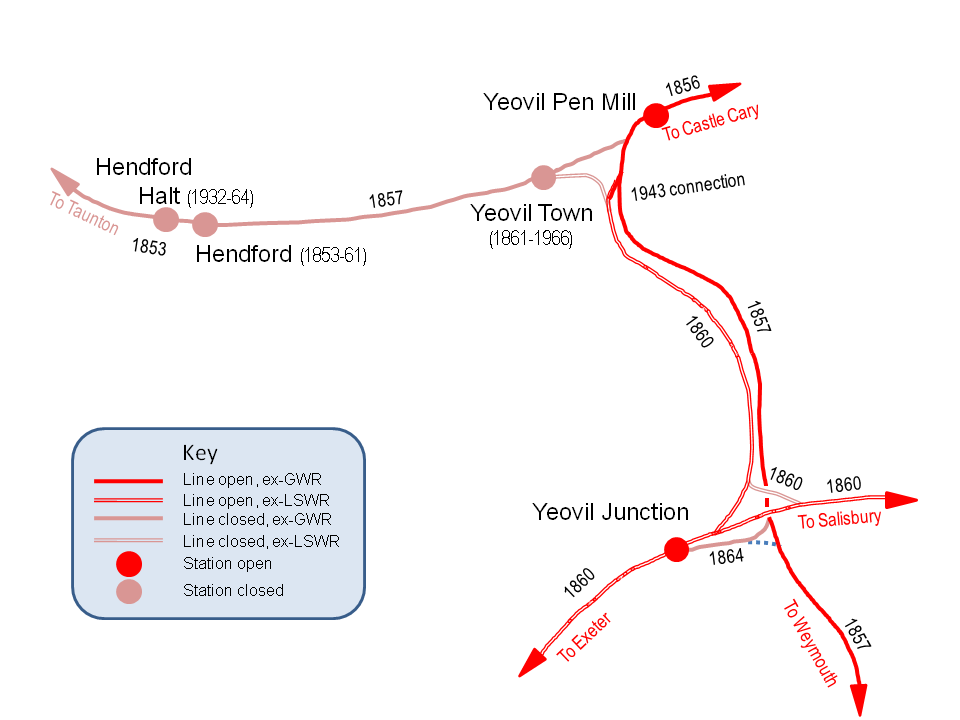|
Petters Ltd
Petters Limited (known as JB Petter & Sons of Yeovil until 1910), were a maker of stationary petrol and diesel engines from 1896 onwards.Petter, Percival. ''The Story of Petters Limited'' (Westbury: David Edgington, 1989) In 1915 Petter founded Westland Aircraft Works (renamed "Westland Aircraft" in 1935). In 1986 Petters Limited merged with one-time rival R A Lister and Company to form Lister Petter. History Car James Bazeley Petter, an agricultural engineer and iron founder, had premises in the Borough, Yeovil.Lukins, A. H. ''The Book of Westland Aircraft'' (Leicester: Harborough, 1944), p. 5 It was there that Ernest and Percival, his twin sons, designed and built a self-propelled oil engine in 1892.http://www.southsomersetmuseums.gov.uk/monographs/monograph01.htm Three years later they designed the first internal combustion engined motor car to be made in the United Kingdom. The car, using a converted four-wheel horse-drawn phaeton and a 3 hp (2 kW) twin-cylinder h ... [...More Info...] [...Related Items...] OR: [Wikipedia] [Google] [Baidu] |
Yeovil
Yeovil ( ) is a town and civil parishes in England, civil parish in the district of South Somerset, England. The population of Yeovil at the last census (2011) was 45,784. More recent estimates show a population of 48,564. It is close to Somerset's southern border with Dorset, from London, south of Bristol, from Sherborne and from Taunton. The aircraft and defence industries which developed in the 20th century made it a target for bombing in the Second World War; they are still major employers. Yeovil Country Park, which includes Ninesprings, is one of several open spaces with educational, cultural and sporting facilities. Religious sites include the 14th-century Church of St John the Baptist, Yeovil, Church of St John the Baptist. The town is on the A30 road, A30 and A37 road, A37 roads and has two railway stations. History Archaeological surveys have yielded Palaeolithic burial and settlement sites mainly to the south of the modern town, particularly in Hendford, where a ... [...More Info...] [...Related Items...] OR: [Wikipedia] [Google] [Baidu] |
Four-stroke
A four-stroke (also four-cycle) engine is an internal combustion (IC) engine in which the piston completes four separate strokes while turning the crankshaft. A stroke refers to the full travel of the piston along the cylinder, in either direction. The four separate strokes are termed: #Intake: Also known as induction or suction. This stroke of the piston begins at top dead center (T.D.C.) and ends at bottom dead center (B.D.C.). In this stroke the intake valve must be in the open position while the piston pulls an air-fuel mixture into the cylinder by producing vacuum pressure into the cylinder through its downward motion. The piston is moving down as air is being sucked in by the downward motion against the piston. #Compression: This stroke begins at B.D.C, or just at the end of the suction stroke, and ends at T.D.C. In this stroke the piston compresses the air-fuel mixture in preparation for ignition during the power stroke (below). Both the intake and exhaust valves are close ... [...More Info...] [...Related Items...] OR: [Wikipedia] [Google] [Baidu] |
Dursley
Dursley is a market town and Civil parishes in England, civil parish in southern Gloucestershire, England, almost equidistant from the cities of Bristol and Gloucester. It is under the northeast flank of Stinchcombe#Stinchcombe Hill, Stinchcombe Hill, and about southeast of the River Severn. The town is adjacent to Cam, Gloucestershire, Cam which, though a village, is a slightly larger community in its own right. The population of Dursley was 7,463 at the 2021 Census. History Dursley once had a castle, built by Roger de Berkeley in 1153.Dursley Location Information Dursley gained borough status in 1471 and lost it in 1886. From 1837 to 1851 it was the administrative centre of Dursley Registration District which recorded ... [...More Info...] [...Related Items...] OR: [Wikipedia] [Google] [Baidu] |
Hamble-le-Rice
Hamble-le-Rice is a village and civil parish in the Borough of Eastleigh in Hampshire, England. It is best known for being an aircraft training centre during the Second World War and is a popular yachting location. The village and the River Hamble also featured in the 1980s BBC television series ''Howards' Way''. The village centre, known as The Square, Hamble, has a more traditional English village aesthetic which differentiates it from the small industrial areas (mostly marinas) close to the village. Location Hamble-le-Rice is on the south coast of England, south-east of Southampton at the tip of the Hamble peninsula, bounded by Netley, Butlocks Heath, Bursledon, Southampton Water and the River Hamble. History Although previously known as "Hamble", "Hamelea", "Hammel", and "Ham-en-le-Rice", the village's official name is now Hamble-le-Rice. The name "Hamble" is still in common usage. On 27 April 1992, the civil parish was renamed from "Hamble" to "Hamble-le-Rice". To the so ... [...More Info...] [...Related Items...] OR: [Wikipedia] [Google] [Baidu] |
Hawker Siddeley
Hawker Siddeley was a group of British manufacturing companies engaged in aircraft production. Hawker Siddeley combined the legacies of several British aircraft manufacturers, emerging through a series of mergers and acquisitions as one of only two such major British companies in the 1960s. In 1977, Hawker Siddeley became a founding component of the nationalised British Aerospace (BAe). Hawker Siddeley also operated in other industrial markets, such as locomotive building (through its ownership of Brush Traction) and diesel engine manufacture (through its ownership of Lister Petter). The company was once a constituent of the FTSE 100 Index. History Origins Hawker Siddeley Aircraft was formed in 1935 as a result of the purchase by Hawker Aircraft of the companies of J. D. Siddeley, the automotive and engine builder Armstrong Siddeley and the aircraft manufacturer Armstrong Whitworth Aircraft. [...More Info...] [...Related Items...] OR: [Wikipedia] [Google] [Baidu] |
Staines, Middlesex
Staines-upon-Thames is a market town in northwest Surrey, England, around west of central London. It is in the Borough of Spelthorne, at the confluence of the River Thames and Colne. Historically part of Middlesex, the town was transferred to Surrey in 1965. Staines is close to Heathrow Airport and is linked to the national motorway network by the M25 and M3. The earliest evidence of human activity in the area is from the Paleolithic and, during the Neolithic, there was a causewayed enclosure on Staines Moor. The first bridge across the Thames at Staines is thought to have been built by the Romans and there was a settlement in the area around the modern High Street by the end of the 1st century CE. Throughout the middle ages, Staines was primarily an agricultural settlement and was held by Westminster Abbey. The first surviving record of a market is from 1218, but one may have taken place near St Mary's Church in the Anglo-Saxon period. The industrialisation of Staines ... [...More Info...] [...Related Items...] OR: [Wikipedia] [Google] [Baidu] |
Egham Hythe
Egham Hythe, Pooley Green and Thorpe Lea are adjacent settlements in the Borough of Runnymede in Surrey, England, approximately west of central London. They are separated from the town of Egham by the M25 and from Staines upon Thames by the River Thames. Egham Hythe has been bypassed by the A30 since the 1950s. It is home to Staines Boat Club and four pubs. It has a large riverside inn and hotel facing the inn, in a conservation area known as the Hythe, meaning port in Old and Middle English. One end of Staines Bridge, a 'local road' crossing of the river, connects Egham Hythe to Staines and the Thames Path crosses from one bank to the other. History The Abbey and the causeway In the centuries around the time of the Norman Conquest the tything of the Hythe, which belonged to Chertsey Abbey, supported only shepherd's tenements and lowly agriculture dwellings due to flooding quite often by the river Thames. The consistent use of the Hythe in ecclesiastical records, Assiz ... [...More Info...] [...Related Items...] OR: [Wikipedia] [Google] [Baidu] |
Lagonda
Lagonda is a British luxury car brand established in 1906, which has been owned by Aston Martin since 1947. The trade-name has not had a continuous commercial existence, being dormant several times, most recently from 1995 to 2008 and 2010 to 2013. History Establishment The Lagonda company was founded in 1906 in the UK in Staines, Middlesex, by American-born Wilbur Gunn (1859–1920), a former opera singer. He became a British national in 1891 and worked as a speedboat and motorcycle engineer in Staines. He named the company after the Shawnee settlement "Lagonda" in modern-day Springfield, Ohio, the town of his birth. This is a glacially eroded limestone gorge of much beauty. Historically, the area played a major role in the Treaty of Easton and the aligning of the Shawnee tribe with the British during the French and Indian War. He had built motorcycles on a small scale in the garden of his house in Staines with reasonable success, including a win on the 1905 London–Ed ... [...More Info...] [...Related Items...] OR: [Wikipedia] [Google] [Baidu] |
Associated British Oil Engine Company
The Associated British Oil Engine Company (ABOE) was a British engineering company. It started life as a combine, similar to Agricultural & General Engineers. Petters Limited joined ABOE in 1937. J&H McLaren & Co. was sold to ABOE in 1943, although it may have been a member from an earlier date. In 1945 Mirrlees, Bickerton and Day joined the group followed by the National Gas and Oil Engine company in 1950. Later, ABOE became a more conventional company as the oil engine division of the Brush-ABOE Group of Companies, an ancestor of Brush Traction Brush Traction is a manufacturer and maintainer of railway locomotives in Loughborough, England. It is a subsidiary of Wabtec. History Hughes's Locomotive & Tramway Engine Works Henry Hughes had been operating at the Falcon Works since t .... References Defunct manufacturing companies of the United Kingdom Engine manufacturers of the United Kingdom Diesel engine manufacturers {{UK-manufacturing-company-stub ... [...More Info...] [...Related Items...] OR: [Wikipedia] [Google] [Baidu] |
Internal Fire – Museum Of Power
The Internal Fire Museum of Power is a museum of internal combustion engines in West Wales. The museum's collection is mostly of larger stationary diesel engines, as used for generating sets and pumping stations. The museum is located at Tan-y-groes, Ceredigion, near Cardigan. Exhibits Most of the engines have been restored to working order. Several engines are in operation when the museum is open. Diesel The museum has the oldest working diesel engine in the UK, a 1912 Sulzer single cylinder air-blast injection Diesel, an example of the original Rudolf Diesel design. Steam The museum houses over 200 tons of working engines in nine halls and in 2020 was in the process of creating a new steam hall to house a 1903, J & E Wood, 500 hp tandem compound along with an 1879, John Penn, twin cylinder oscillating paddle steamer (ex Empress) as well as a number of smaller engines including the only surviving Petter steam engine. In 2017, the museum's second Engineering Heritag ... [...More Info...] [...Related Items...] OR: [Wikipedia] [Google] [Baidu] |





